Ijraset Journal For Research in Applied Science and Engineering Technology
- Home / Ijraset
- On This Page
- Abstract
- Introduction
- Conclusion
- References
- Copyright
Effect of Partial Replacement of Fine Aggregate with Copper Slag and CRT With Addition of Aramid Kevlar Fiber
Authors: Sheikh Umar Ahmed, Sourabh Lalotra
DOI Link: https://doi.org/10.22214/ijraset.2023.56116
Certificate: View Certificate
Abstract
Concrete is the most widely used construction material and the second most consumed substance in the world. Different Copper Slag and CRT concretes were created in this study by using Aramid Kevlar fiber in place of fine Aggregates. Every construction makes use of a significant amount of concrete because of its importance. Cathode-Ray Tube (CRT) technology has lagged behind as a result of the constant replacement of new technologies, such as LED Display Panel and Liquid Crystal Displays (LCD), which is leading to an increase in the number of discarded CRTs that need to be disposed of each year globally. The heavy waste material known as CRT funnel glass can increase the weight per unit of concrete. In terms of the components of products made during the copper production process, copper slag qualifies as an industrial product. It is a crystalline granular substance that can be utilized as a finer aggregate in concrete because of its high density and sand-like particle size. Aramid Kevlar fiber are completely synthetic organic polymers, aromatic polyamides are sometimes known as kevlar fiber. The properties of this aramid-kevlar fiber are extremely diverse and they have low density. This project\'s goal is to stop environmental damage caused by inappropriate disposal by employing it as an additional material in specially developed Copper Slag and CRT concretes by Replacing the fine Aggregates and adding Aramid fiber, which is typically used on construction sites. The 36&24% of Fine Aggregates with Copper Slag and CRT and 0.6% of Aramid Kevlar Fiber were used as reinforcement. The compression strength test, flexural strength test, and split tensile strength test were used to determine the maximum proportion of replacement.
Introduction
I. INTRODUCTION
Concrete is the second most consumed substance in the world and it is the most commonly used construction material. Major volume of concrete is contributed by aggregates. About 70–80% volume of the structural concrete is occupied by the aggregates, in which coarse aggregate (CA) contributes 40–50% and fine aggregate contributes 25–30%. Conventionally, naturally available materials like crushed rocks and river sand are used as coarse and fine aggregate respectively. Nowadays scarcity of resources is a major problem resulted by the excessive depletion of natural aggregates. The protection of environment is one of the major challenges in today’s world. We can aid to this problem by reusing and recycling the waste products, reducing the use of natural materials and using environmentally friendly materials. In order to have sustainable development one must focus on these environmental problems. Minimizing the waste can be achieved by using waste products as aggregates and other materials in construction practices. This will not only minimize the waste but also preserve our natural resources. This will help in increasing its life span and thus reducing dumping of waste, space for landfill disposal and extracting natural resources.
A. Aramid Fiber Faber
Aramid kevlar fiber is known as the aromatic polyamides because they are the totally man-made polymers organic. They produced from the chemical liquid blend. This aramid kevlar fiber are contains properties range are very wide and they having that are low density. But they are well impact resistant. Now aramid kevlar fiber molecules present are characterized by the chain of rigid polymers they are powerful hydrogen bond to link. Aramid kevlar fiber is treated in commercially way in the foam of meta-aramid fiber in 1960. They have high strength properties used for different-different various applications.
B. Cathode Ray Tube (CRT)
A Cathode Ray Tube (CRT) is the glass video display component of an old electronic video device. Reuse or repair of these tubes are not practical options, CRTs can be recycled. Due to the presence of lead located in the funnel glass, CRTs marked for disposal are considered hazardous waste. CRTs and CRT glass were once easily recycled into new CRTs. However, the demand for new CRTs has collapsed in favour of new flat panel technologies. Because of rising costs, negative economic incentives and shifts in CRT glass markets, some CRT processors and recyclers are choosing to store the glass indefinitely rather than send it for recycling or disposal, which increases the risk of mismanagement and/or abandonment of CRTs.
C. Copper Slag
Copper slag is an industrial product in terms of the content of products made from the process of making copper. It is a crystalline granular material with a high density and its particle size is the shape of the sand and can be used as finer aggregate in concrete. It has the same physical and chemical properties as sand. . If copper slag is not disposed of properly, the main cause of CO2 and other harmful gas vapours is global warming which destroys the ozone layer which is harmful to the planet Earth. Due to the low quantity of CaO in copper slag, granulated copper slag has pozzolanic properties. Copper slag can develop cementitious characteristics as the CaO level rises. According to a study, a copper slag with about 19 percent CaO showed excellent cementitious characteristics when activated with NaOH. After 4 hours of curing at 80°C, the strength of copper slag mortars activated with NaOH is even greater than that of PC mortars. Before even being immersed in water and a corrosive prepared by adding 230 g/L NaCl, 64 g/L MgCl2, 15 g/L KCl, and 14 g/L MgSO4, these PC mortars and copper slag were activated with NaOH. Whether they are submerged in the water or the corrosive solution, the strength of the NaOH-activated copper slag mortars gradually increases over time. Copper slag is black and glassy in nature. Its particles are irregular and has specific gravity of 3.54 and bulk density of 1.89.
II. LITERATURE REVIEW
Hilton et al. in 2019 CRT glass pozzolana recycled in concrete at a 20% by weight cement replacement, produces a significant benefit in concrete and confirms that it is a lower carbon material with cementitious properties for the higher energy cement. It will also lessen the overall environmental impact of the cement..
Kim et al. 2018 concrete's fine aggregates were swapped out for CRT waste funnels. Heavy weight waste glass has been added to concrete mixtures, and it has been suggested that these mixtures exhibit remarkable endurance and can be utilized to build radiation shielding structures. The air content increased somewhat as the waste glass content grew, and the slump value increased as the waste glass substitution ratio increased. Low water cement ratio and low air content could cause the loss in compressive and flexural strength to worsen.
Naganur et al. (2014) Increased as the percentage of copper slag rose. The greatest gain in compressive strength was noted at a replacement level of 40%. Concrete's strength started to decline as copper slag substitution reached 50% of the sand content. Thus, the characteristics of concrete were assessed up to a 60% replacement level. The density of concrete grows together with the age of CS. The replacement ratio for concrete's splitting tensile strength has increased to 40%. The splitting tensile strength of concrete produced with control mix has been shown to be lower than that of concrete produced with replacement percentages more than 40%. Corrosion of the reinforcement has been seen to worsen as With increase in the percentage of copper slag, the concrete has been found to be more vulnerable to acid attack. after 30 days of immersion in H2SO4 solution, The loss of weight has increased with increase in copper slag percentage in concrete.
Madhavi, T.Ch. et al. (2014): used Concrete's mechanical properties can be enhanced by substituting copper slag, an industrial waste product, for cement and sand. Copper slag can be utilised up to 30%, however using it more than 50% results in a loss of strength.
George Soupionis (2021) In this paper, the reinforcement of concrete combining composite materials with carbon,glass and aramid fibers is discussed. Accordingly, cement specimens reinforced with chopped carbon fibers were manufactured via the retrofitting method and coated using various different types of fabrics (carbon, glass and aramid), and epoxy resin systems were developed and studied using compressive strength tests. In addition, polymeric matrix (epoxy resin) composite materials reinforced with different types of fabric (carbon, glass and aramid (Kevlar® 49)) were manufactured and their shear and bending strengths were measured. Before reinforcing cement specimens, all fabrics (carbon, glass and aramid (Kevlar® 49)) were placed in a vacuum chamber and were processed via pre-impregnation. This specific reinforcing method significantly improved the mechanical properties of cementitious structures with compressive strength values that reached 81 MPa. In a similar way, the bending and shear strengths of the materials under study were measured at 405 MPa and 33 MPa, respectively.
III. MATERIALS
A. Cement
Cement is a fine, grey powder. It is a fine powder produced by grinding Portland cement clinker (more than 90%), a limited amount of calcium sulphate (which controls the set time) and up to 5% minor constituent it is mixed with water and materials such as coarse aggregates and fine aggregates to make concrete. The cement and water form a paste that binds the other materials together as the concrete hardness. It is a material with adhesive and cohesive properties which is capable of bonding mineral fragments into a compactsolid. It is used in the making of concrete with property of setting and hardening, of which when the chemical properties reacts with water. OPC does not disintegrate in water as it sets and hardens in water. The cement contains two basic ingredients namely argillaceous and calcareous.
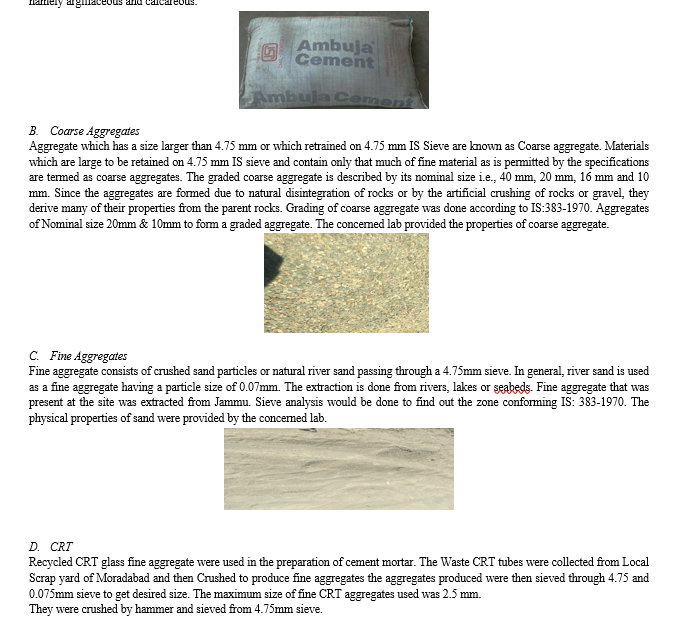
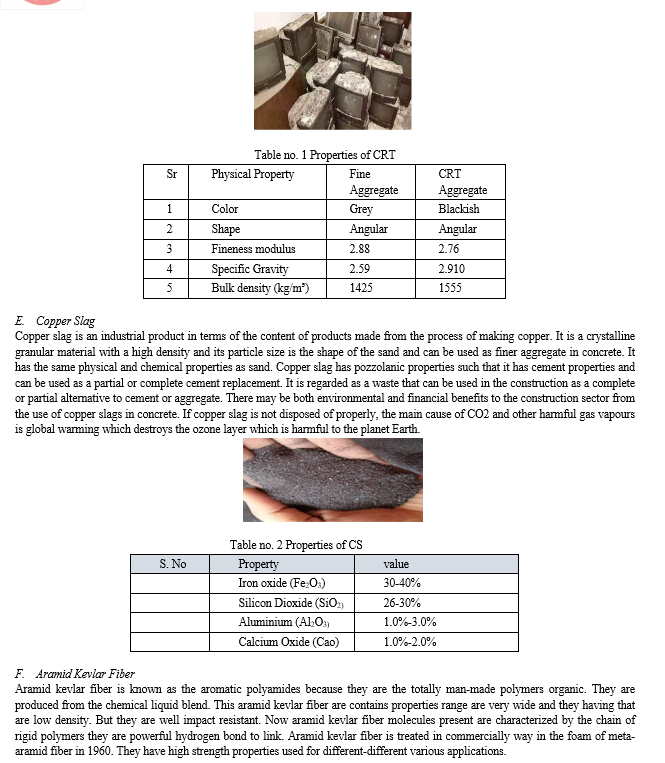
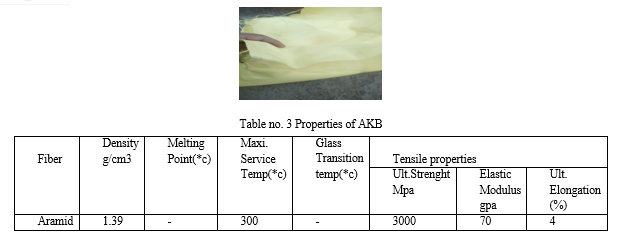
IV. METHODOLOGY
A. Mixing Concrete
All the ingredients of concrete are mixed together however this mix should be homogenous and uniform in color and consistency. The mixing can either be done by hand or with the use of mixer.
B. Mixing Concrete
Thorough mixing of the materials is essential to produce uniform concrete. The mixing should make sure that the mass become homogeneous, uniform in consistency and colour. There are two methods adopting for mixing concrete one is hand mixing and other is machine mixing.
C. Curing
Before removing the mould, it is dried for 24 hours, and then specimens are placed in a water tank made to cure specimens. The specimens must be marked for identification so that there must not be any error. The specimens are removed from the tank and dried before putting in the testing machine. The specimens are kept in the tank for 7,14,28 days.
D. Workability Test
It can be used in site as well as in lab. This test is not applicable for very low and very high workability concrete. It consists of a mould that is in the form of frustum having top diameter of 10cm, bottom diameter of 20cm and height of 30cm. The concrete to be tested if fitted in the mould in four layers. The each is compacted 25 times with the help of tamping rod. After the mould is completely filled it is lifted immediately in the vertically upward direction which causes the concrete to subside.
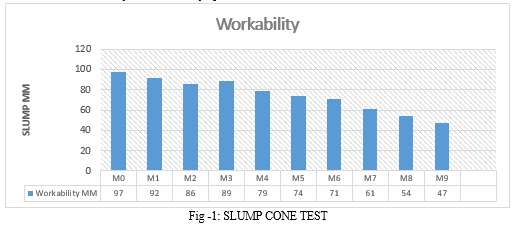
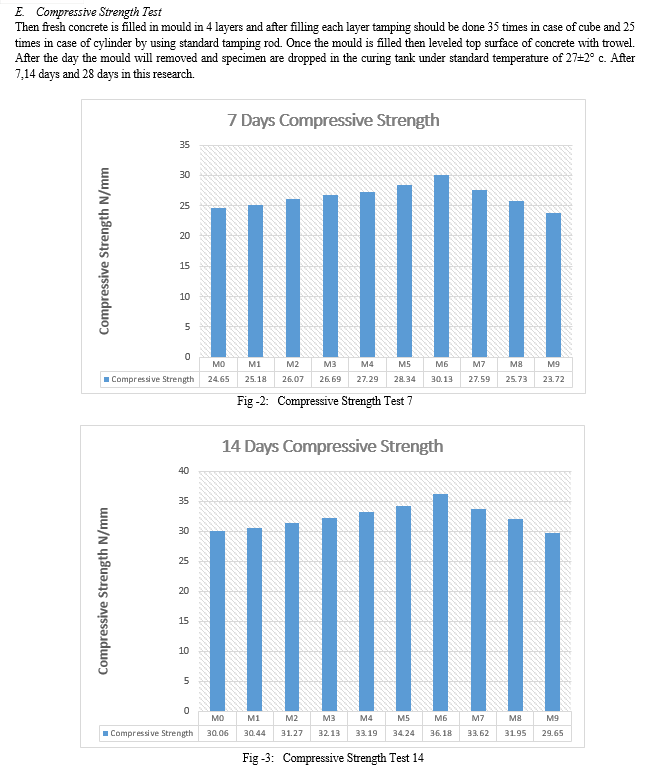
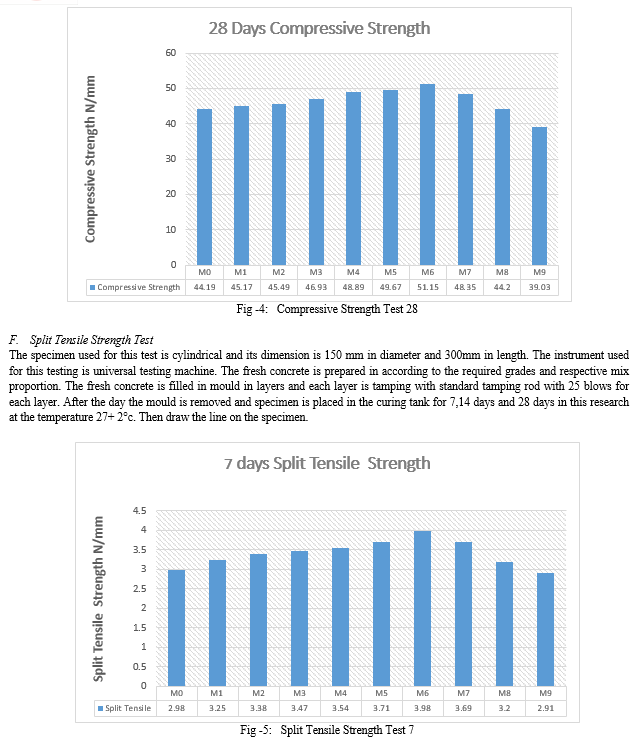
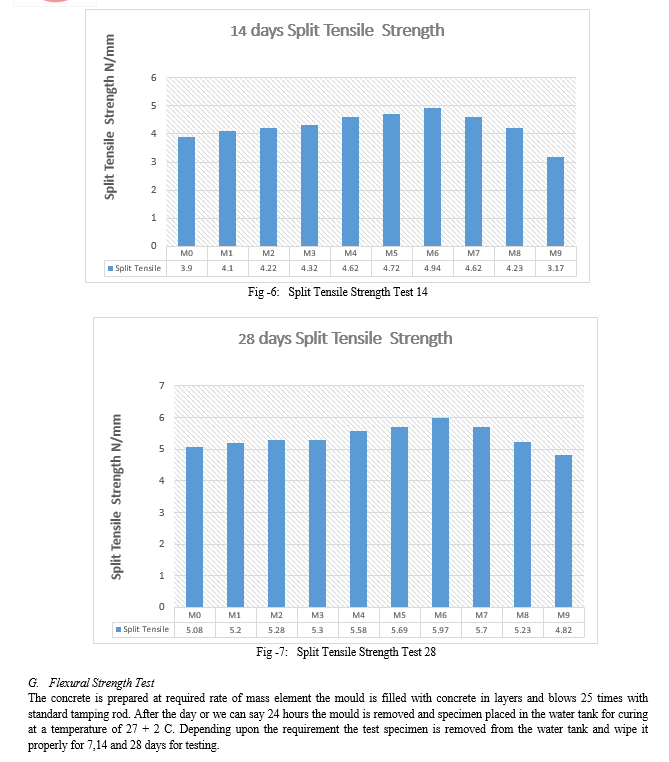
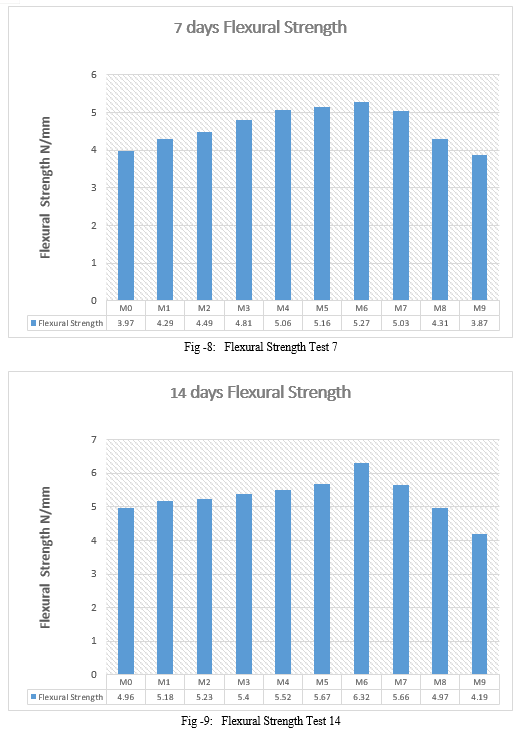
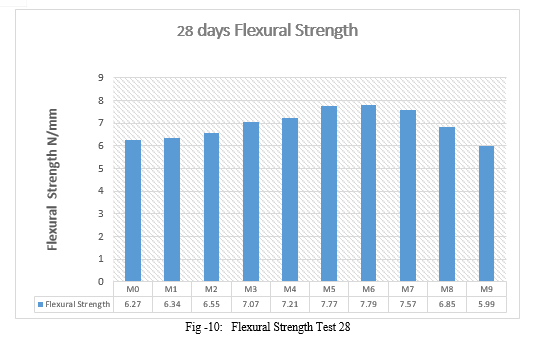
Conclusion
On filling up the moulds hand compaction should be opted, as to reduce the segregation of the fibre in the concrete mould. 1) Aramid kevlar fiber acted as a reinforcement and hence acted as resistance to the cracks, thus increasing the flexural strength 2) By replacing the Fine aggregates with the Copper Slag and CRT with addition of Aramid kevlar fiber strengths get increased, also the replacement can be taken into consideration up to certain percentage workability factors gets enhanced as well. 3) In case of compressive strength test conducted on cubes of size 150 x 150 x 150 mm, the compressive strength increases up to certain replacement and later on starts to get decreased as well. 4) The compressive strength of the concrete on comparing with conventional concrete gets increased till 36&24% of Fine aggregates with the Copper Slag and CRT and for reinforcement 0.6% of Aramid kevlar fiber was used. The strength obtained at 7th day is 30.13 N/mm2. 5) After 14 days of curing, the maximum compressive strength obtained was 36.18 N/mm2 for same replacements and addition. 6) After 28 days of curing, maximum compressive strength obtained was 51.15 N/mm2 7) In case of compressive strength, the optimum percentage that was noticed, was at 36&24% of Fine aggregates with the Copper Slag and CRT and for reinforcement 0.6% of Aramid kevlar fiber was used. 8) The flexural strength of the concrete on comparing with conventional concrete gets increased till 36&24% of Fine aggregates with the Copper Slag and CRT and for reinforcement 0.6% of Aramid kevlar fiber was used. The maximum strength obtained at 7th day is 5.27 N/mm2. 9) After 14 days of curing, the maximum flexural strength obtained was 6.32 N/mm2 for same replacements and addition. 10) After 28 days of curing, maximum flexural strength obtained was 7.79 N/mm2. 11) In case of flexural strength, the optimum percentage that was noticed, was at 36&24% of Fine aggregates with the Copper Slag and CRT and for reinforcement 0.6% of Aramid kevlar fiber was used. 12) After 7 days of curing, the maximum tensile strength obtained was 3.98 N/mm2 for same replacements and addition. 13) After 14 days of curing, the maximum tensile strength obtained was 4.49 N/mm2 for same replacements and addition 14) After 28 days of curing, maximum tensile strength obtained was 5.97 N/mm2. 15) In case of tensile strength, the optimum percentage that was noticed, was at 36&24% of Fine aggregates with the Copper Slag and CRT and for reinforcement 0.6% of Aramid kevlar fiber was used.
References
[1] Asst. Professor and Anumal Raju, Mookambika Technical Campus. Asst.Prof. Liji Anna Mathew Toc H Institute of Science & Technology, Retrofitting Of RC Beam Using (FRP) From the Publication Of Ijert Vol-2.issue 1, January-2013-ISSN:2278-0181. [2] Ratan Kharatmol, Pankaj Sananse, Rohit Tambe, Ms.Raksha and J.Khare, Strengthening of Beams Using Carbon Fiber Reinforced Polymer -International Journal of Emerging Engineering Research and Technology Volume 2, Issue 3, June 2014, PP 119-125 ISSN 2349-4395 & ISSN 2349-4409 Online. [3] M. Monjural Hasan Ahsanul Kabir, prediction of compressive strength of concrete from early age test result. ISBN: 978-984-33-4363-5. [4] J.Gopikrishna Retrofitting of Reinforced Concrete Beam with Externally Bonded CFRP. Issue 07 | December 2015 ISSN online: 2349-6010. [5] Dheeraj Kumar, Shivani Bhardwaj, experimental study on the high strength aramid kevlar fiber reinforced in concrete beam and structural retrofitting of fiber RC beam using synthetic steel fiber. International research journal of engineering and technology - IRJET volume 5 issue 12 December 2018 [6] V.T. Badari Narayanan, Amlan Kumar Sengupta, S.R. Satish Kumar, seismic retrofit of beams in buildings for flexure using concrete jacket. ISET Journal of Earthquake Technology. Paper No. 518, Vol. 49, No. 1-2- March-June 2012- pp. 1–22. [7] Riza Secer Orkun Keskin, Kadir Sengun, retrofitting SFRC beams by using CFRP. The Eurasia Proceedings of Science, Technology, Engineering & Mathematics (EPSTEM) ISSN: 2602-3199. [8] Al-Jabri KS, Al-Saidy AH, Taha R. Effect of copper slag as a fine aggregate on the properties of cement mortars and concrete. Construction and Building Materials. 2011; 25(2): 933-938. [9] A. S. Alnuaimi (2012), “Effects of Copper Slag as a Replacement for Fine Aggregate on the [10] Behavior and Ultimate Strength of Reinforced Concrete Slender Columns”. TJER, Vol. 9, No. 2, 90-102. [11] Ambrish E1, Dhavamani Doss S, Shanmuga Nathan N, Ganapathi Raj S (2017). Partial Replacement of Copper Slag as Fine Aggregate. International Journal of Civil Engineering (SSRG – IJCE), 4(3), ISSN: 2348 – 8352 [12] B.Kavitha*, M. Lenin Sundar (2017).Experimental Study on Partial Replacement of Coarse Aggregate with Ceramic Tile Wastes and Cement with Glass Powder. International Journal of ChemTech Research.10(8), 2455-9555 [13] G B Ramesh Kumar, R. Chandrika and A Rohith Reddy (2017). Partial replacement of fine aggregate with copper slag. International journal of advance research(IJAR). 5(10), 87-92 [14] Ikponmwosa E.E and Ehikhuenmen S.O (2017), “The Effect of Ceramic Waste as Coarse aggregate on Strength Properties of Concrete”. Nigerian Journal of Technology (NIJOTECH) Vol.36, No. 3, [15] Abd Elmoaty Mohamed Abd Elmoaty(2013). Mechanical properties and corrosion resistance of concrete modified with granite dust in Construction and Building Materials 47(2013) [16] Ali A. Aliabdo, Abd Elmoaty M. Abd Elmoaty, Esraa M. Auda Re-use of waste marble dust in the production of cement and concrete Construction and Building Materials 50 (2014) 28–41 [17] Bostanci, Use of Waste Marble Dust and Recycled Glass for Sustainable Concrete Production, Journal of Cleaner Production (2019), https://doi.org/10.1016/j. jclepro.2019.119785 [18] Brian Hilton, Kimberly Bawden, Kathryn Winnebeck, Chathurani Chandrasiri, Erandi Ariyachandra, Sulapha Peethamparan The functional and environmental performance of mixed cathode ray tubes and recycled glass as partial replacement for cement in concrete - Resources, Conservation & Recycling 151 (2019) 104451 Concrete Technology- M.S Shetty Concrete Technology- ML Gambir.
Copyright
Copyright © 2023 Sheikh Umar Ahmed, Sourabh Lalotra. This is an open access article distributed under the Creative Commons Attribution License, which permits unrestricted use, distribution, and reproduction in any medium, provided the original work is properly cited.

Download Paper
Paper Id : IJRASET56116
Publish Date : 2023-10-12
ISSN : 2321-9653
Publisher Name : IJRASET
DOI Link : Click Here
 Submit Paper Online
Submit Paper Online

